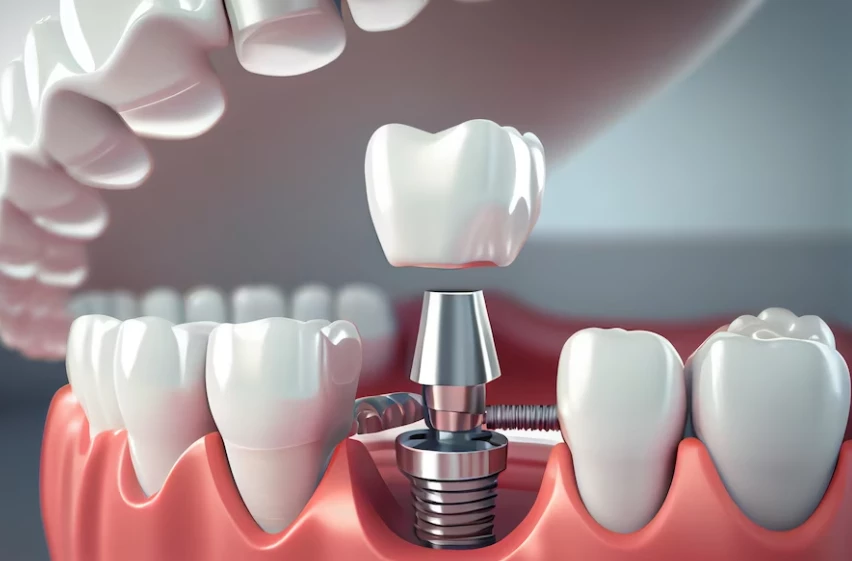Dental implants have earned their reputation as the go-to solution for replacing missing teeth. They look and function just like natural teeth, and with proper care, they can last a lifetime. Over the past few decades, technology and innovation have made dental implants more predictable, accessible, and successful than ever before. But the field isn’t standing still.
In the years ahead, dental implants are set to become even more effective, convenient, and affordable thanks to rapid advances in materials, techniques, and digital dentistry. Whether you’re considering implants now or simply curious about where the industry is headed, it’s worth knowing what’s on the horizon.
The next generation of dental implants promises better results, shorter recovery times, and smarter, more personalized care. Let’s dive into the future of dental implants and explore the game-changing innovations shaping permanent tooth replacement.
How Will Advancements in Technology Impact The Future of Dental Implants?
Technology has already reshaped dental implantology, and its influence will only accelerate. Here’s how cutting-edge tech will transform implants in the years ahead:
Greater Precision with Digital Scanning and 3D Imaging
Today’s dental teams use digital scanning and 3D imaging to map out every detail of your mouth before surgery. This ensures that implants are placed exactly where they need to go, improving fit and long-term success. In the near future, we’ll see even more advanced imaging, allowing for nearly flawless, patient-specific planning. 3D printers may soon produce custom-fit implants matched to each person’s anatomy—improving comfort, function, and aesthetics.
Robotics and Artificial Intelligence (AI)
Dentistry is moving toward robotic-assisted implant surgery. Robotic tools and AI-driven software help guide surgeons’ hands, boosting precision and consistency. AI will also play a growing role in treatment planning—analyzing X-rays, predicting complications, and optimizing implant placement for each patient.
Less Invasive Surgical Techniques
Lasers, digital guides, and minimally invasive methods are making implant surgery faster, less traumatic, and more comfortable. Patients experience less swelling and pain, and recover in less time. As these techniques advance, dental implant surgery will continue to become easier for both dentists and patients.
Smart Implants
Imagine an implant that tracks its own health. “Smart” dental implants equipped with sensors could monitor bone levels, detect early signs of infection, and alert you or your dentist if problems arise—before you notice symptoms. This real-time data could help prevent complications and keep implants healthy for years.
Augmented Reality (AR) for Training and Surgery
AR is making its way into dental education and surgical planning. Dentists can overlay digital models of your mouth during surgery for live guidance, reducing human error and improving outcomes. As AR tools become standard, they’ll streamline procedures and training across the industry.
What New Materials are Being Used For Dental Implants in the Future?
The next wave of dental implants relies on improved materials for better results and comfort. Here’s a look at what’s coming:
Zirconia Implants
Zirconia is gaining popularity as a metal-free alternative to titanium. Its natural white color blends better with teeth, and it resists plaque and corrosion. In the future, expect zirconia implants to become even more common, appealing to patients who want the most natural look or have sensitivities to metal.
Advanced Titanium Alloys
Titanium remains the industry standard, prized for its strength and biocompatibility. But researchers are developing new titanium alloys that are even stronger, more flexible, and resistant to corrosion. These improvements can help implants last longer and function even better.
Bioactive Coatings
Bioactive coatings on implants help bone fuse to the implant more quickly and securely. Soon, dentists may use custom bioactive coatings tailored to your body’s healing response, speeding up recovery and improving the odds of long-term success.
Graphene-Enhanced Implants
Graphene, a form of carbon famous for its strength and conductivity, is emerging as a game-changer in medical devices. Early studies suggest graphene-coated implants could be lighter, tougher, and more resistant to wear. While still experimental, graphene may help future implants last even longer.
3D-Printed Custom Implants
3D printing lets dentists create fully customized implants in-house, using biocompatible materials. This means a perfect fit for every patient, less material waste, and potentially lower costs. As 3D printing technology matures, it will make dental implants more precise and accessible than ever.
Are There Any Breakthroughs That Could Make Dental Implants More Affordable?
Cost is a big factor for many patients. But several innovations promise to make implants more budget-friendly:
- Automation and Efficiency
Robotics, AI, and digital workflows will continue to streamline implant procedures, cutting down on surgery time and reducing labor costs. More efficient processes mean practices can offer implants at lower prices without compromising quality.
- 3D Printing and Customization
Custom 3D-printed implants aren’t just about better fit—they’re also about cost savings. By reducing the need for multiple appointments, molds, and remakes, 3D printing lowers the total cost of care for both practices and patients.
- Affordable New Materials
Breakthroughs in materials—like mass-produced zirconia, bioactive ceramics, or innovative coatings—can reduce manufacturing costs. As these new options become standard, patients can expect more choices at a wider range of price points.
- More Competition and Wider Access
As demand for implants rises and more dentists gain the skills to provide them, competition will push prices down. Advances in technology also make it possible for smaller practices to offer implants, widening access and lowering costs for patients everywhere.
How Might the Process of Getting Dental Implants Change in the Next Decade?
Expect the entire dental implant experience to become faster, easier, and more comfortable:
- Faster Recovery Times
Thanks to improved surgical techniques and bioactive materials, the healing process will speed up. Many patients may be able to resume normal activities within days, rather than weeks.
- Minimally Invasive Procedures
Smaller incisions, less drilling, and digital guides mean less pain and swelling after surgery. Many future implant procedures will be done with minimal cutting—sometimes even without stitches.
- Shorter Treatment Timelines
Right now, getting implants can be a months-long process, especially if bone grafts are needed. But new technologies could accelerate bone integration, shortening the time between implant placement and final tooth restoration.
- Greater Comfort and Anxiety Management
Expect more patient-friendly touches, like advanced sedation options, virtual reality headsets for relaxation, and improved pain management. The entire process will become less stressful and more comfortable.
- Remote Monitoring and Follow-Up
Soon, “smart” implants and remote monitoring tools will allow your dentist to check on your healing without repeated office visits. This makes follow-up care easier—especially for busy patients or those living far from their provider.
Schedule Your Consultation at Cascade Dental Today!
At Cascade Dental, we stay ahead of the curve to deliver the latest in implant technology and patient care. Whether you’re missing one tooth or several, our skilled team uses the newest techniques to restore your smile quickly and comfortably.
From your first consultation to your final restoration, you’ll get a customized plan designed for your needs and goals. Don’t put off your perfect smile. Contact Cascade Dental today to schedule your consultation—because your best smile starts here.




